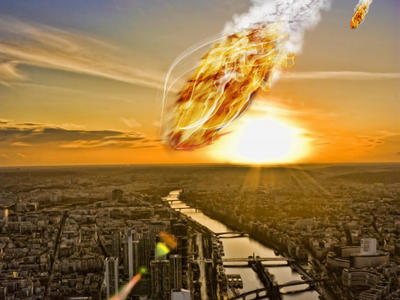
MUCH ADO ABOUT DOOMSDAY
PHYLICIA TORREVILLAS METRO CANADA
So say experts, who want to dispel a widespread belief that the ancient Mayans predicted Dec. 21, 2012 to be the last day for all humankind.
Jaymie Matthews, an astronomer and astrophysicist at the University of British Columbia, said the date simply marks the end of a 5,126-year era in the “long count” Mayan calendar.
This calendar system records how many days have passed since Aug. 11, 3114 BCE, the day believed to be the date of creation.
But the Mayans weren’t warning future generations about an impending gloom and doom just because they didn’t make any physical records of their calendar that went past the first long count, Matthews points out.
“Why would you ever make a calendar that starts on the second long count, which won’t start for a couple thousand years after you were dead and buried?” he asks.

Predicting the Apocalypse is so 2011.
Matthews says it would take a Mayan astronomer at least 10 months to carve a calendar pattern on a huge piece of stone.
“There wasn’t a point in making and going through the effort of making a calendar that would cover the second long count and would absolutely be of no use to anybody because nobody was going to be alive.”
Justin Jennings, lead curator of the exhibition Maya: Secrets of their Ancient World at the Royal Ontario Museum, agrees that the Mayan calendar doesn’t predict the end of the world but a transition into a new era.
“For the Maya, the idea was a cycle of time would end in December, but the next day a new cycle would begin,” he says.
“(It’s like) when you throw out your old calendar, it doesn’t mean the world ends. You get a new one.”
Matthews says if anything bad happens to the world, it’s not going to be anything the Mayans foresaw.
“If something happens to the world on Dec. 21, 2012, it would be something we would do ourselves,” he says.
There isn’t the slightest reason to be worried, Matthews adds, as this would have been the super party of all time for the Mayans.
